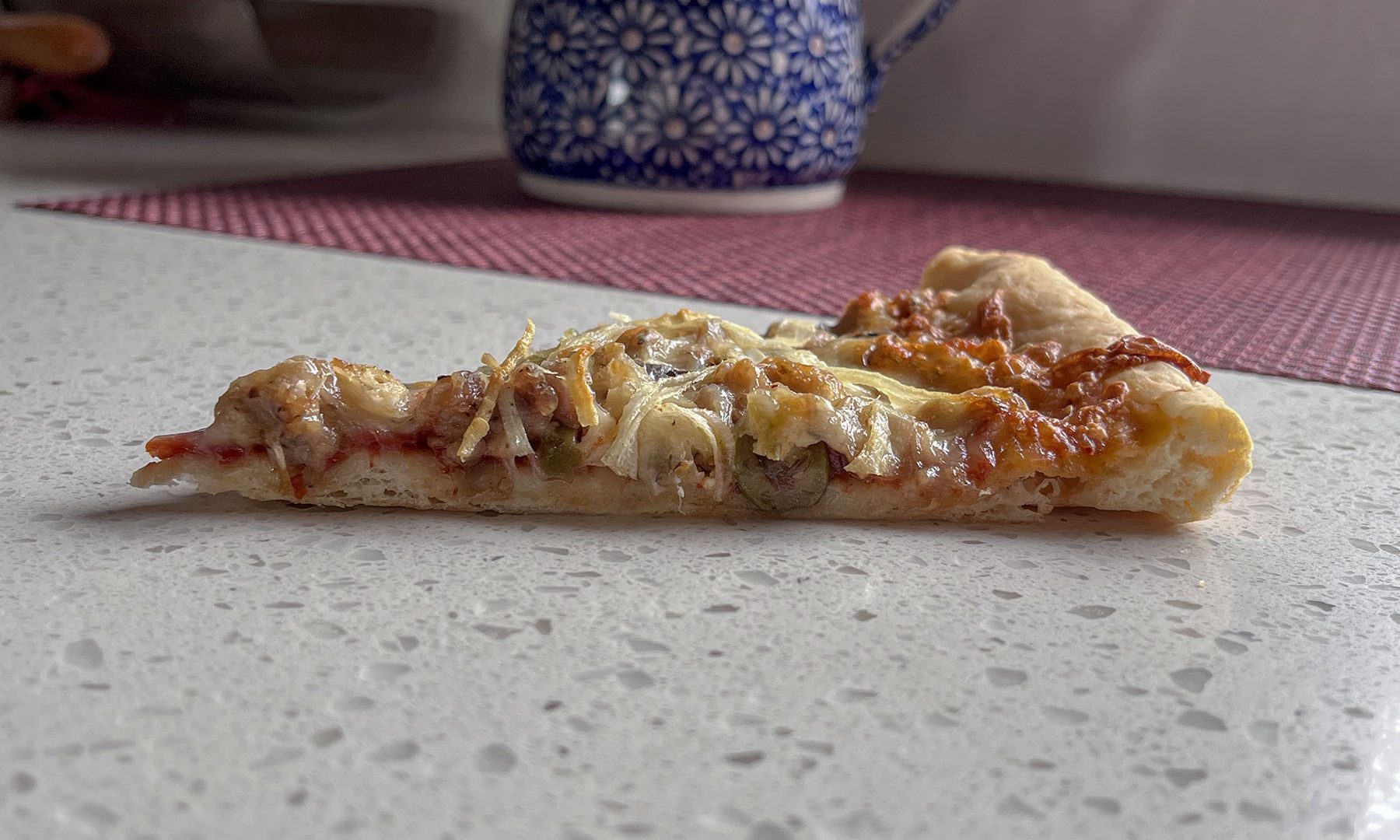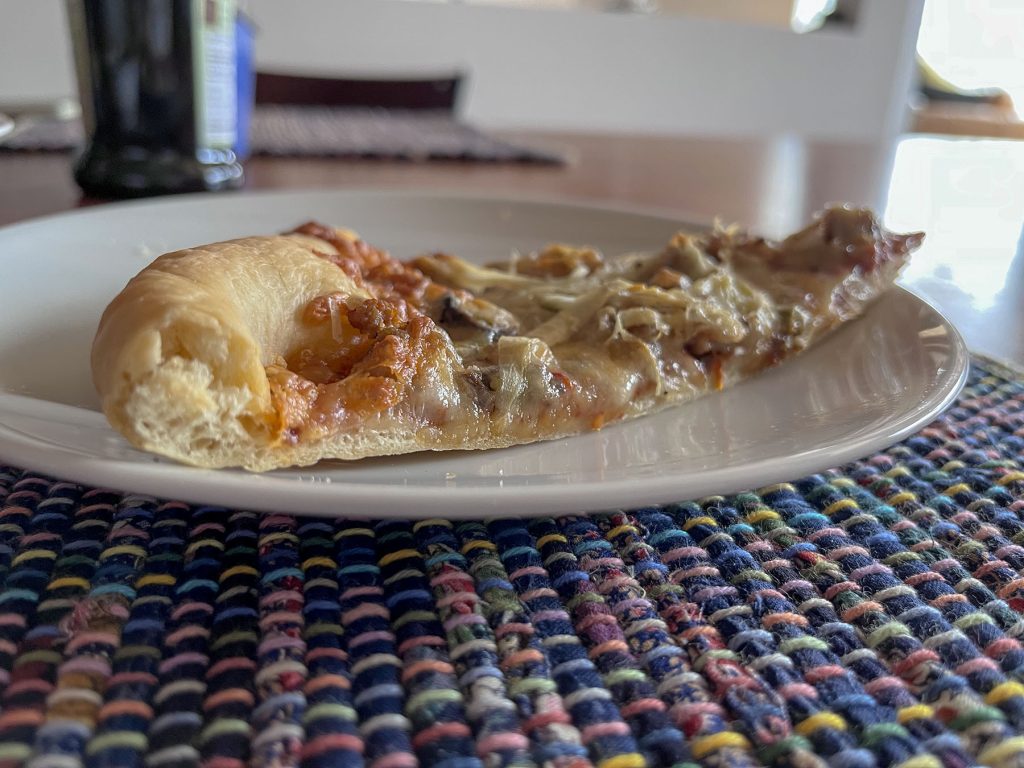Reading a story about thin Midwestern pizza in the New York Times food section by J. Kenji-Lopez-Alt, I began to think about all my favorite pizzas, and front of mind was my hometown go-to: the LaCasa pizza of my childhood in Omaha, Nebraska.
LaCasa’s is the crust that is thin, flaky and so Midwestern. It’s a pizzaria that has survived through the decades when convenience and chains put many family restaurants out of business. And not because it was the only option.
Omaha was a biggish town when everyone traveled by railroad and has a long history — like Chicago — of a diverse population and as a result: good ethnic restaurants. Chinese, Bohemian, delis and diners before the 20th century opened and many that were still open to me as a kid looking for better than Burger King in the 1960s. And better than greasy Pizza Hut. I made La Casa a favorite long before it happened with a click. I was loyal.
Loyal to LaCasa’s hamburger pizza because it is topped with highly-seasoned good Nebraska ground beef. And as I learned from JKLA, the crust is intentionally wafer thin and crunchy so the toppings matter.
With this in mind, Steuart set out, like his compatriot JKLA at the NY Times, to make a dough in the Midwest style.
Dough Recipe:
- 300 g pizza flour
- 165 g of water (55% hydration)
- 30 g of olive oil
- 7 g salt
- 3 g yeast
The process:
- In a large mixing bowl zeroed out on a kitchen scale, weigh in the flour, salt, yeast.
- add the olive oil, then the water (heated in the electric kettle to about 100 degrees)
- mix thoroughly. Let rest for one hour. Knead the dough and let rest for about three hours.
- Roll out the dough. Felt a little stiff and required some waiting and wrangling. Let the dough sit on the parchment paper cut for the baking sheet for about 1.5 hours.
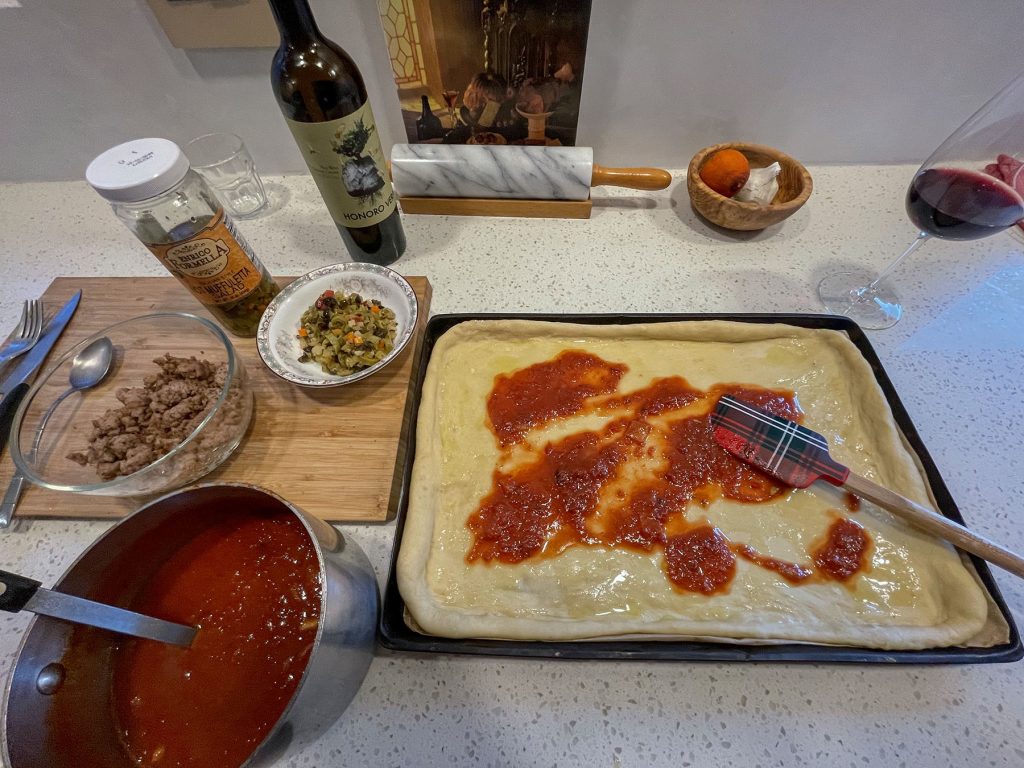
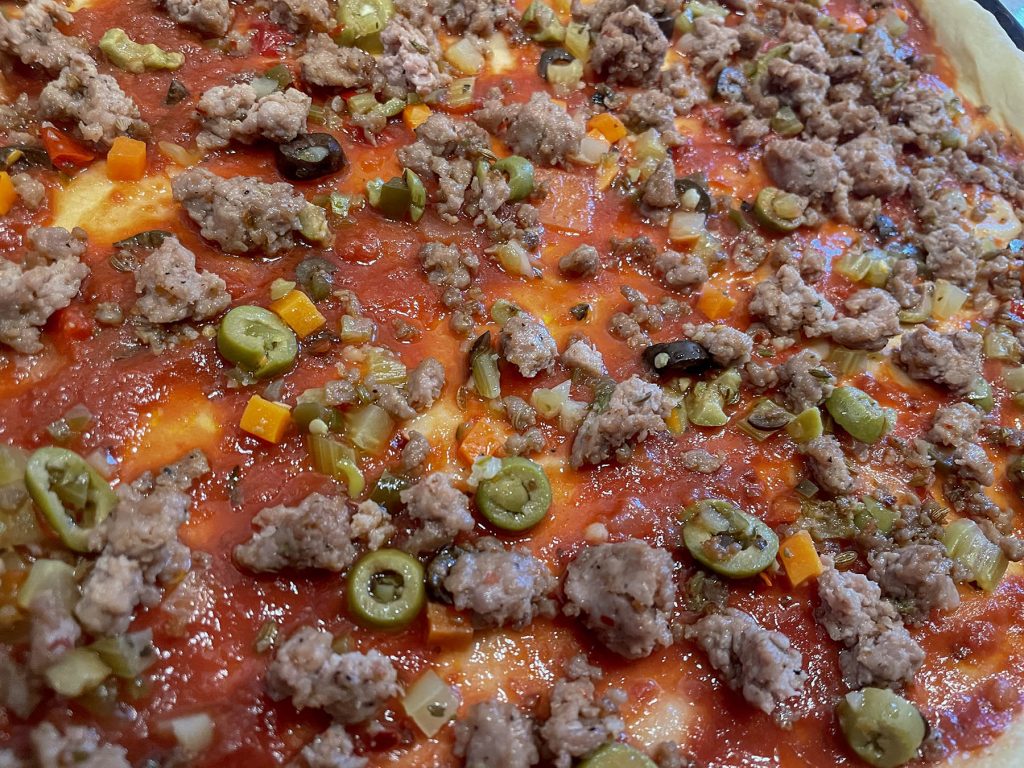
The topping:
- Pueblo green chilli sausage from Gaglianos Market on the south side of Pueblo, Colorado.
- Giardinera in the jar marked Mufalatta mix from the same market.
- Grated Mozzerella Cheese
- Sliced Onion
- dusting of Parmesean
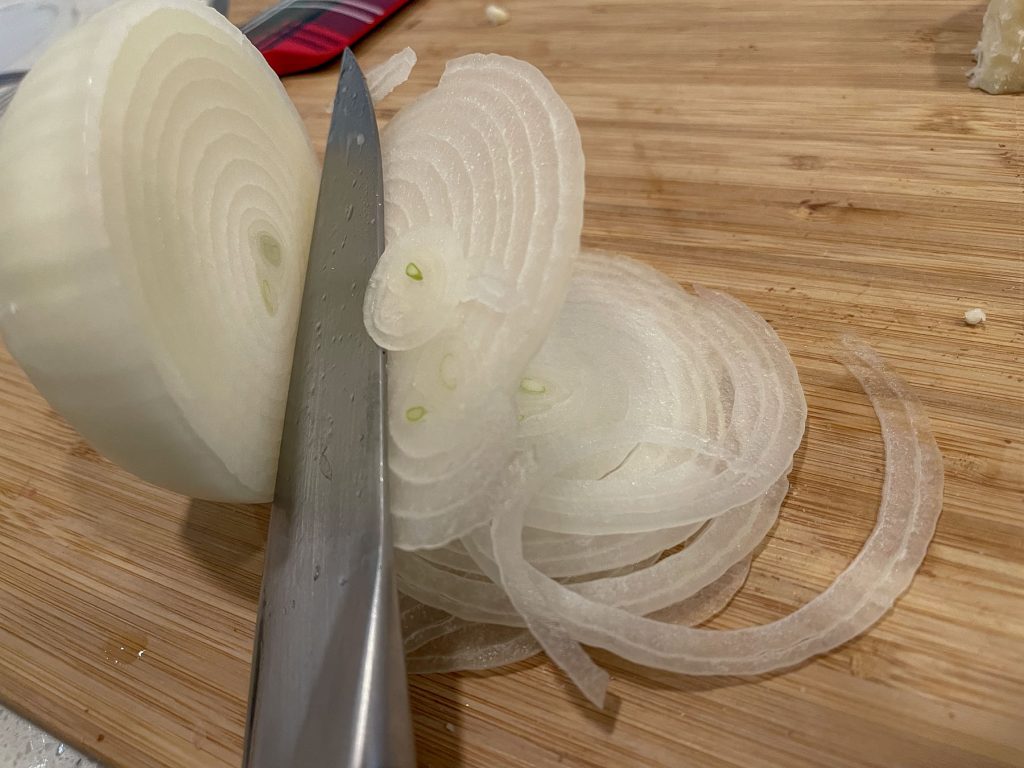
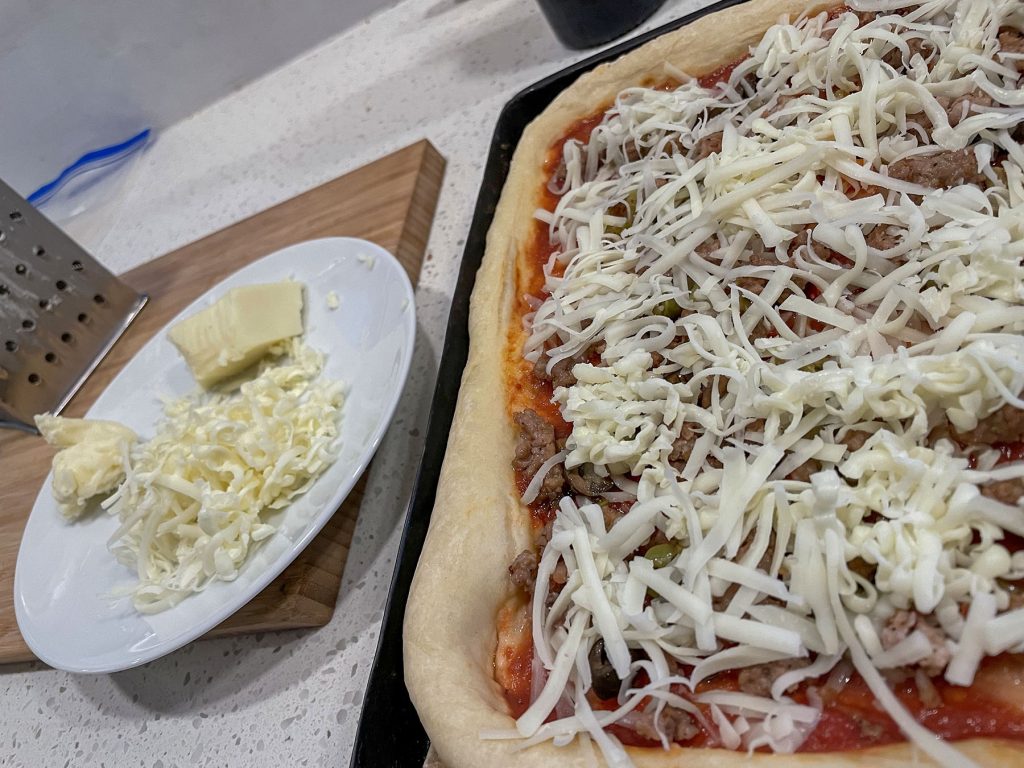
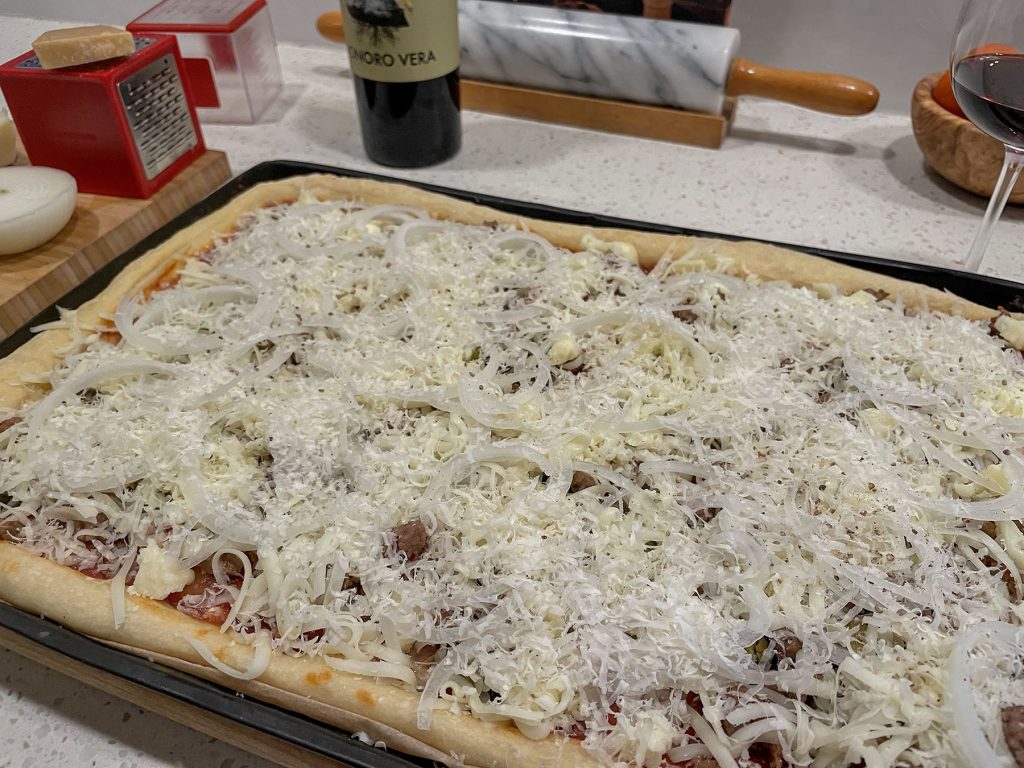
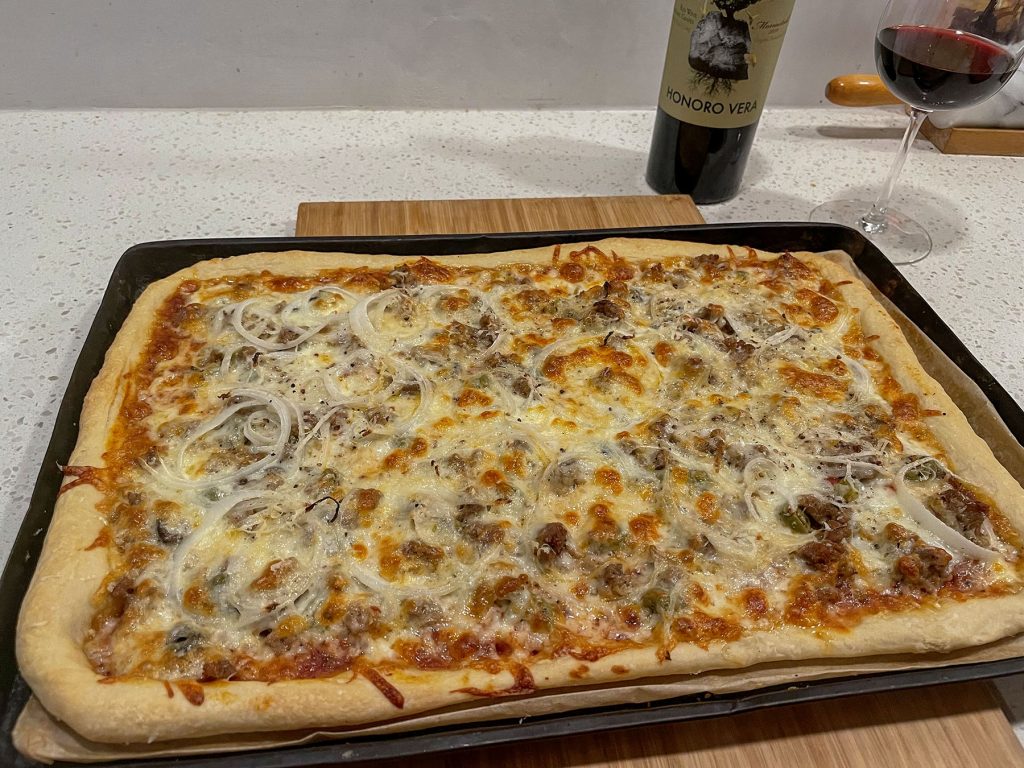
Our reaction:
Steuart and I both decided this is one of our favorite pizzas of all those he has ever made. The crust isn’t as thin as Kenji was making to emulate the tavern style pizzas of Chicago. It is thicker than the LaCasa pizza in our memory. It is thin, but a substantial amount – the right amount – of bread to go with our toppings. We like this thickness.
Usually Steuart makes a large batch of bread dough, and separates out a quarter of it for a pizza, and leave the rest to rise overnight. He bakes loaves of bread the day after our pizza dinner. A crust made from traditional bread dough is more bready. Even when he rolls it out thin, it will rise more than this dough, especially on the edges. It is also far more flexible than this crust. When bent in half this crust folds like a piece of paper. It threatens to break. So don’t do that. Serve it in thin wedges. Expect it to be as crisp as the best pie crust. Not cracker brittle, and certainly not rubbery.
